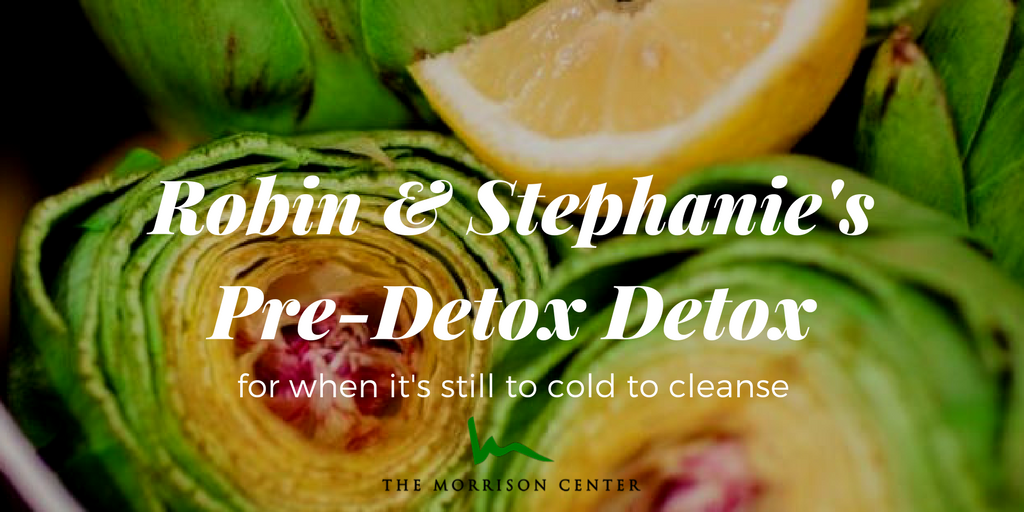By Robin Foroutan, MS, RDN and Stephanie Mandel, NC

We want to detox, we really do… but it’s STILL so cold!
If you were wondering when our annual spring detox was going to start, you’re not alone. So are we! We generally regard the spring equinox as the perfect time to “spring clean” our bodies, but this year, it’s still really cold. That’s why we’re sharing our Pre-Detox Detox tips, with our 6 favorite — yet, lesser known — springtime vegetables and (warm!) beverages.
1. Asparagus:
Asparagus is one of the first spring vegetables and comes in green, white and purple varieties. Super high in vitamin K and folate, it’s a natural diuretic and contains a compound that helps your body eliminate pesticides from food.[1]
Tip: That smell? Yup, that’s the asparagusic acid (aka 1,2-dithiolane-4-carboxylic acid), an important antioxidant that gives asparagus so many health benefits.
2. Radish
Whether red, white, black or yellow, radishes are a fast-growing root vegetable with lots of health benefits. They support detoxification in the body because of their high levels of glucosinolates and ability to promote bile flow — plus, they act as a natural diuretic to help flush out excess fluid.[2] [3]
Tip: Slice them and add them to salads, or cut in half and sauté them to minimize their spicy “bite.” If the radish greens look fresh, chop them up and add them to the salad — they taste similar to mustard greens.
3. Broccoli sprouts
You already know that broccoli, cauliflower, and kale all have detox super powers, but you may not have heard about broccoli sprouts. They’re packed with sulforaphane, a cancer-fighting, detox promoting antioxidant, plus digestive enzymes to boot. Think of these miniature wonders as super concentrated broccoli — they have up to 100 times more sulforaphane than full grown broccoli![4]
Tip: You can even sprout these at home from broccoli seeds — 3- to 4-day-old sprouts have been found to have the highest sulforaphane concentration.
4. Artichoke
Technically a flower bud from the thistle family, artichokes have long been thought of as a medicinal food, and research agrees. Artichoke leaves are great for liver support and promote detoxification, as digestion, heart health, and blood sugar support. High in fiber and antioxidants, artichokes also offer silymarin, the active component in milk thistle that makes it such a liver wonder-herb.[5]
Tip: Instead of buying canned or jarred marinated artichoke, look for fresh baby artichokes, which cook faster and are more tender and flavorful. Steam them in water with sliced lemon for 20-30 minutes and enjoy!
5. Dandelion Tea
While dandelion is available nearly year-round, spring dandelion is the most tender and mild tasting. The whole plant is edible either raw or boiled into a tea. Dandelion has been used for hundreds of years as a natural diuretic and constipation remedy. It’s one of our top detox picks, since it’s been found to support liver detox and bile production (which also aids digestion).[6]
Tip: Fresh dandelion can be found at local farmers markets and health food stores, and is also available dried as a tea.
6. Nettle Tea
Originally referred as “stinging nettle,” this common weed does dual duty in the springtime. Its detox capacity has been used since ancient times to cleanse the body, since nettle acts as a kidney tonic, diuretic, and mild laxative. Nettle can also be used to alleviate spring allergies, because of its ability to reduce histamines.[7]
Tip: Nettle is extremely high in chlorophyll, so brew nettle tea until the water becomes an opaque dark green to get the most out of this medicinal spring plant.
We hope you enjoyed our Pre-Detox Detox tips. Stay tuned for an update about when we’ll be getting our TMC detox started. In the meantime, get your 10- or 30-day detox kits ready and keep warm with our spring favorites!
[1] Okamoto, Y. and Shibamoto, T., Journal of Agricultural and Food Chemistry, September 22, 2004; vol 42: pp 5919-5923.
[2] Nutr Cancer. 2012;64(7):1038-48. doi: 10.1080/01635581.2012.714831.
[3] http://foodfacts.mercola.com/radish.html
[4] https://www.ncbi.nlm.nih.gov/pmc/articles/PMC23369/
[5] https://www.ncbi.nlm.nih.gov/pubmed/26310198
[6] https://www.ncbi.nlm.nih.gov/pubmed/23603008
[7] https://www.ncbi.nlm.nih.gov/pubmed/19140159